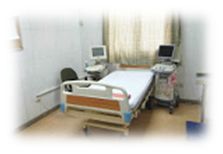Case Quiz (June 2024)
Our patient, since birth, he has been under the care of a hematologist due to thrombocytopenia, with platelet counts ranging from 44 to 76 × 10^9 /L. Mean platelet volume was 10.7 fL. Platelet aggregation test was normal. A bone marrow examination at age 10 years showed no abnormalities. The patient's mother and younger sister also have thrombocytopenia with normal-sized platelets and mean platelet volumes.
At age of 13 years, during a routine health check, systolic hypertension was noted with a maximum of 155 mm Hg. Nephrotic proteinuria was also detected, with proteinuria of 3.8 g/24 h. Creatinine level was elevated at 2.3 mg/dL and urea at 67 mg/dL. Blood count showed hemoglobin of 12.8 g% and thrombocytes of 38 × 10^9 /L without leukocytosis or Döhle bodies.
Renal ultrasound revealed normal-sized kidneys with increased parenchymal echogenicity. 24-hour ambulatory blood pressure monitoring confirmed hypertension. A renal biopsy showed signs of segmental glomerulosclerosis, with 6 out of 9 glomeruli completely sclerotic. The preserved glomeruli exhibited thickening, splitting, and reduplication of the basement membrane, suggestive of glomerulosclerosis, along with mesangiolysis, concentrically thickened arteriolar walls, and signs of tubular atrophy with necrotic casts. Immunofluorescence examination was inconclusive due to inadequate glomerular tissue, precluding a definitive classification as either unclassified focal segmental glomerulosclerosis or membranoproliferative glomerulonephritis.
Comprehensive complement testing at an external facility was normal, as were immunoglobulin levels and various autoimmune markers. Hearing tests indicated no impairment, and examinations of the eye's background and anterior segment were unremarkable.
Treatment initially included corticosteroids at a dose of 40 mg/m^2 /day and angiotensin-converting enzyme inhibitors (ACEI). Immunosuppressive therapy with mycophenolic acid (500 mg twice daily) was subsequently added due to the renal biopsy findings, with a reduction in corticosteroid dosage. However, the treatment regimen did not achieve the desired outcome.
A diagnostic test was done
Case Answer (June 2024)
MYH9-associated disorders represent a spectrum of autosomal dominant diseases characterized by congenital macro-platelet-thrombocytopenia, leukocyte inclusions (Döhle’s bodies) and to varying degrees also by associated extra hematological complications such as nephropathy, sensorineural hearing loss, and cataract.
The MYH9 gene encodes a contractile cytoskeletal protein – myosin IIA non-muscle heavy chain (NMMHC-IIA), which interacts with actin fibers in platelets, leukocytes, Corti’s auditory organ, and podocytes.
Glomerular renal impairment is detected in approximately 30% of cases and is characterized by the early onset of proteinuria with a tendency for rapid progression of altered renal function.
The NMMHC-IIA protein is also localized in mesangial and tubular kidney cells. The pathologic mechanism of glomerulopathy has not been completely clarified.
